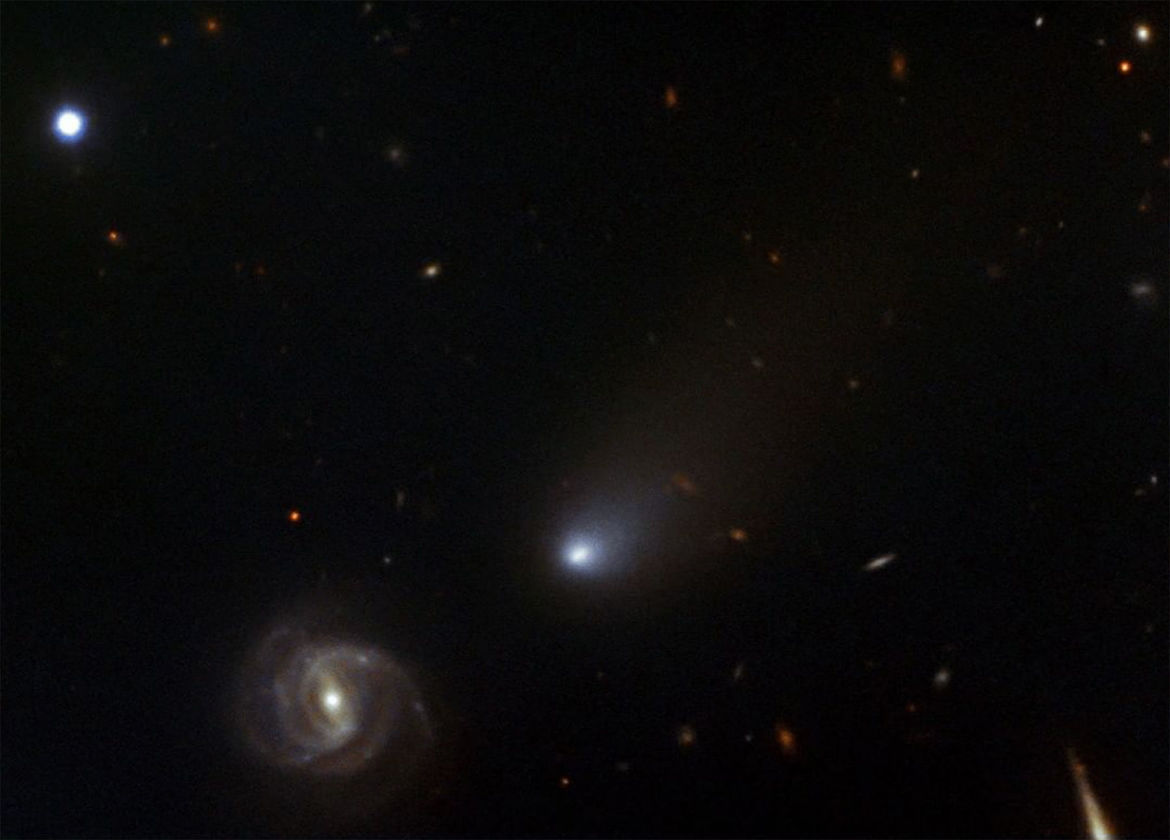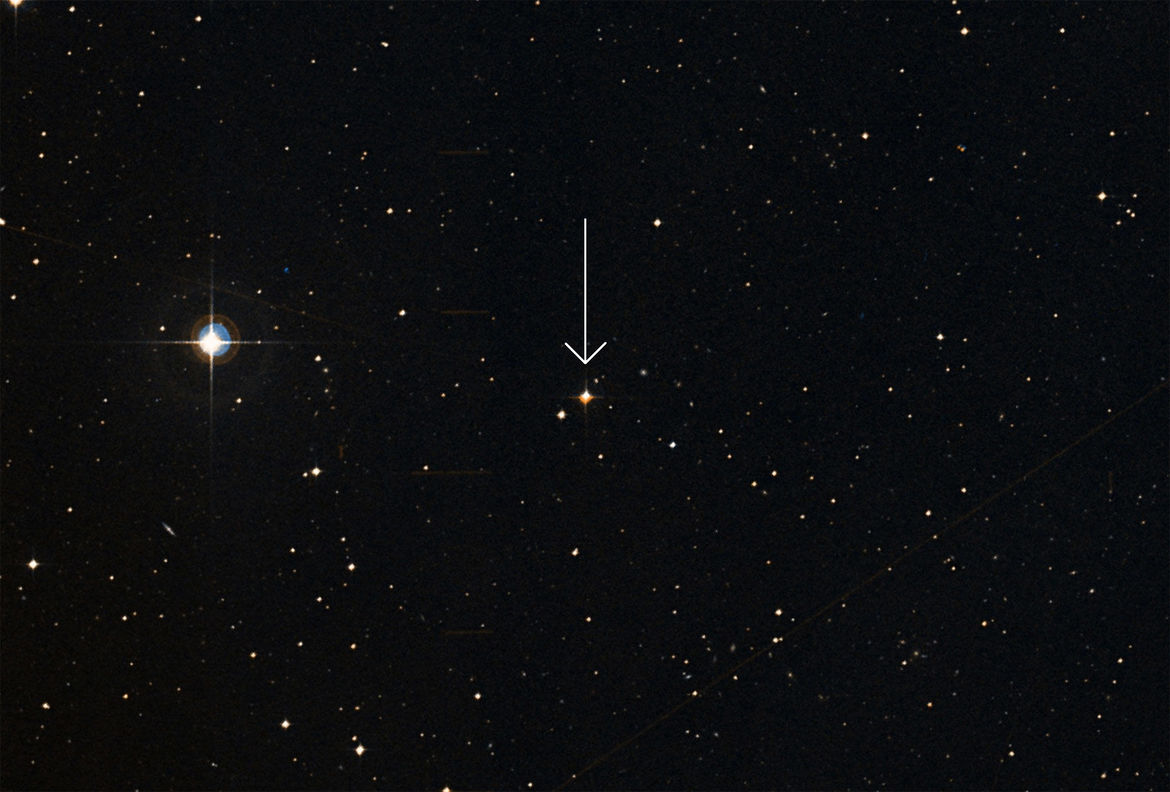

COMET OF THE WEEK
WEEK 37: SEPTEMBER 6-12
COMET 2I/BORISOV I/2019 Q4
Perihelion: 2019 December 8.55, q = 2.007 AU
According to our present understanding of how the solar system formed and evolved, all the various comets, including those passing through the inner solar system as well as those in the Kuiper Belt and the Oort Cloud, are the “leftovers” from the planet formation process. Over the lifetime of the solar system, various processes, including gravitational perturbations by the planets (especially Jupiter) as well as gravitational influences by stars passing near or through the Oort Cloud, have ejected many comets from the solar system into interstellar space. If, as would seem logical to suspect, the same processes operate in other planetary systems as well, we would accordingly expect interstellar space to contain many, perhaps large numbers of, comets that have been ejected from their original planetary systems. The existence, or non-existence, of such objects, along with the frequency with which we might encounter them, would then tell us much about how valid our understanding might be and about the number of planetary systems in the Galaxy and how the formation processes operate there, and physical studies of any interstellar comets that might pass through the solar system would tell us much about how conditions in other planetary systems are similar to and/or different from the conditions within ours.
The detection of comets arriving from interstellar space has thus been of very high interest to astronomers. Ever since their importance was realized there had been no confirmed detections of any such objects, until October 2017 when the Pan-STARRS program in Hawaii detected the object now known as 1I/‘Oumuamua. The true physical nature of this object was never able to be determined; although it did not exhibit any overt cometary activity, it did exhibit some circumstantial evidence of such. Its story is the subject of a future “Special Topics” presentation.
Two years later the second interstellar object passed through the inner solar system, and this one was clearly a comet. It was discovered on the morning of August 30, 2019, by an amateur astronomer in the Crimea, Gennady Borisov, who over the past several years has carried out a moderately successful CCD-based search program for comets at small elongations from the sun. This particular comet, his 8th overall comet discovery, and which he made with a recently-completed 65-cm telescope that he had built himself, was an 18th-magnitude object at an elongation of 38 degrees and located a few degrees east-northeast of the “twin” stars Castor and Pollux in Gemini. As orbital calculations were performed over the next couple of weeks its interstellar nature quickly became quite obvious, as it was found to be traveling on a strongly hyperbolic orbit with an eccentricity of 3.4. Meanwhile, astronomers with the Zwicky Transient Facility program in California were able to identify some pre-discovery images of the comet to as far back as December 13, 2018, at which time its heliocentric distance was 7.9 AU.
Comet Borisov brightened fairly rapidly as it approached perihelion, being at 16th magnitude in early October and then reaching a peak brightness of magnitude 14.5 around the time of its closest approach to Earth (1.94 AU) in late December, remaining in the morning sky throughout that time. By early 2020 it had begun fading and, traveling southward, entered southern circumpolar skies in early February, where it remains at this time. Theoretically the comet may still be detectable with very large telescopes, although the most recent observations that I am aware of were obtained in early July with the Hubble Space Telescope.

 Comet 2I/Borisov during its passage through the inner solar system, 2019-20. Left: Image taken with the 8.1-meter Gemini North Telescope in Hawaii on November 12, 2019. The bright spiral galaxy is LEDA 1168242. Courtesy NSF’s National Optical-Infrared Astronomy Research Laboratory/NSF/AURA/ Gemini Observatory. Right: Image I took with the Las Cumbres Observatory facility at McDonald Observatory in Texas on December 21, 2019, right around the time of the comet's maximum brightness.
Comet 2I/Borisov during its passage through the inner solar system, 2019-20. Left: Image taken with the 8.1-meter Gemini North Telescope in Hawaii on November 12, 2019. The bright spiral galaxy is LEDA 1168242. Courtesy NSF’s National Optical-Infrared Astronomy Research Laboratory/NSF/AURA/ Gemini Observatory. Right: Image I took with the Las Cumbres Observatory facility at McDonald Observatory in Texas on December 21, 2019, right around the time of the comet's maximum brightness.
Astronomers began making physical observations of Comet Borisov early on, and for the most part it has behaved more-or-less like a solar-system comet would behave. Its overall chemical composition is also somewhat similar to those of ordinary solar-system comets, although there are some subtle differences, one of these being an unusually high ratio of carbon monoxide to water – rare, although not unheard-of, in solar-system comets. This suggests that Comet Borisov formed in an unusually low-temperature environment, perhaps at a large distance from its parent star, and/or that the parent star was a low-temperature object such as an M dwarf (which constitute roughly 75% of all stars in the Galaxy).
Studies with the Hubble Space Telescope indicate that Comet Borisov’s nucleus is roughly 400 to 1000 meters in diameter. In late March the comet exhibited a brief flare in brightness and Hubble images showed the existence of an accompanying fragment, which led to some initial speculation that the comet might be breaking up. This fragment was apparently quite small, however, and although Hubble images from July still show it, the comet itself appears to remain intact.
 Hubble Space Telescope images of Comet 2I/Borisov, showing the receding of the fragment first detected in late March 2020. Left to Right: May 6, May 29, and July 6, 2020. Courtesy NASA/Karen Meech/Daniel Bamberger.
Hubble Space Telescope images of Comet 2I/Borisov, showing the receding of the fragment first detected in late March 2020. Left to Right: May 6, May 29, and July 6, 2020. Courtesy NASA/Karen Meech/Daniel Bamberger.

well as Ross 573 are M dwarf stars.) A lot of uncertainties still remain, however, and it is rather likely that we will never conclusively determine Comet Borisov’s point of origin. Meanwhile, it will depart the solar system in the direction of the constellation Telescopium – somewhat to the south of Sagittarius – which is also in the plane of our Galaxy. One can only speculate as to what Comet Borisov might encounter in the future during its almost endless journey through the depths of interstellar space.
“Comet of the Week” archive
Ice and Stone 2020 home page
Earthrise Institute home page